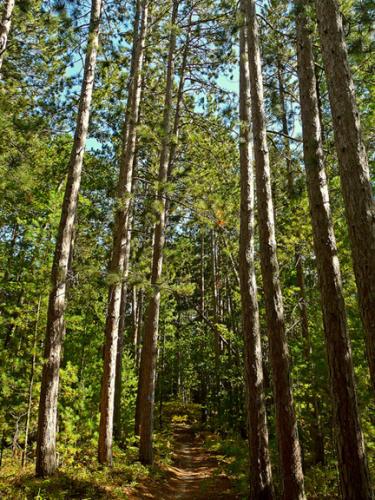Restoring Forest Ecosystems
Of course, restoration isn’t just about picking and planting the right trees. It’s about the big picture—looking at everything that lives in your woods and restoring the whole ecosystem.
That ecosystem includes your trees, understory plants, the soil and all the organisms that live in it, any bodies of water and the plants and animals that live there, and local wildlife. Each of these elements plays an important role in the health of your woods.
Understory plants protect the soil from erosion and provide wildlife with food. The soil and water nourish your trees. Wildlife adds beauty to your woods, organic material to its soil and can even propagate your trees and other desirable plants.
If each of these elements is balanced and healthy, your trees will be healthier and your restoration will be more successful.
So what can you do to keep them healthy?
- Keep it thin. Thinning your woods is good for your trees and allows in more sunlight for a healthier forest floor.
- Keep it controlled. You want biological diversity in your understory as well as your forest. Use mechanical means or herbicides to control invasive species that can choke out native understory plants.
- Retrace your steps. Operating heavy equipment can compact your soil and hurt the plants, insects, worms and other critters that keep it fertile and healthy. Whenever possible, designate and reuse the same trails to travel through your woods, and avoid areas with wet or especially sensitive soils.
- Tend to the land. If your soil has already been damaged, tilling and mulching can loosen the compacted earth and encourage worms and other creatures to come back.
- Tend to the water. If a fire, tornado or other natural disaster has dumped debris into your ponds or streams, take time to remove the debris and restore your waterway. Restock it with native fish if the debris claimed your water’s wildlife.
- Bank on your banks. Protecting the banks of your streams or other bodies of water is important. Establish a buffer of riparian plants and trees to control erosion along the water.
- Think habitat. Attracting wildlife to your woods is all about providing shelter and food. So leave a few snags (dead standing trees) or decaying logs around for animals to move into, and encourage native shrubs and plants in areas where they can provide cover and food.
By restoring each element in your damaged woodland, you can help heal the whole. But it’s a process that involves quite a few steps and decisions, and you may not want to handle it all on your own. If you want a professional’s guidance along the way, there are many places to turn for help.
Find out more
- See Restoring Land and Planting Trees, a guide developed for international projects but useful for U.S. woodland owners too.
- Use the USDA/NRCS's Web Soil Survey for an analysis of soil types in your area and what the soil will support.
How can I get more tips?
It’s simple! Enter your email below.

